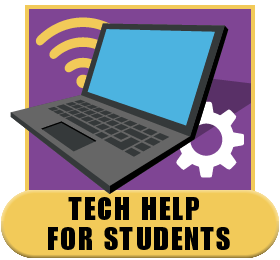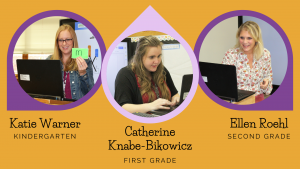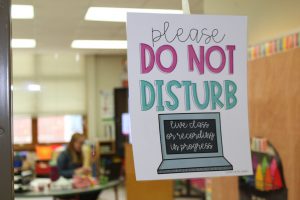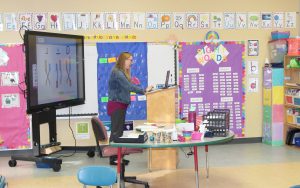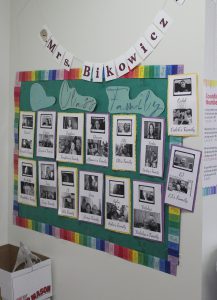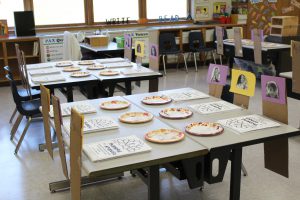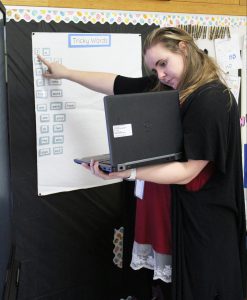A Closer Look at Remote Learning at The Greater Johnstown School District
Remote Learning at GJSD
Pleasant Avenue Elementary Teachers Say Creativity and Patience are the Key to Making Connections with their Remote Students
A picture gallery has been posted on the GJSD Facebook page: https://bit.ly/36d1bpa
One week before Thanksgiving break, GJSD Superintendent William Crankshaw sent a note to district families letting them know what steps have been taken internally to ensure a seamless transition to fully remote learning, should the district find it necessary to switch learning models because of COVID-19. Teachers and students have all been briefed on what they need to do in the coming days to be prepared for the possibility of that shift, at any time. There are several students and teachers, however, who have the system down to a science, because they’ve successfully been doing it since the start of the school year.
In August, families were asked to choose between two learning models for their child — hybrid (two days in-person, three days remote) — or fully remote. When the commitment forms came in, administrators realized that at the elementary level, there were enough fully-remote students to dedicate one teacher per grade level.
At Pleasant Avenue Elementary school, Principal Cory Cotter assigned Katie Warner to teach the all-remote kindergarten class, Catherine Knabe-Bikowicz for first grade and Ellen Roehl for second grade.
“When it came time to assign teachers for the all-remote classes, we intentionally chose educators who we knew would be up for the challenge of trying something new,” Cotter said. “We had the experience of remote learning from last spring to learn from and build on. This time around, we had time to create a more effective learning model and make sure we had the proper resources in place to support it,” she added. “All three of these teachers have risen to the challenge. They’ve gone above and beyond to make sure our kids are keeping pace.”
So what exactly does remote learning look like at Johnstown?
Teachers at the elementary level use Zoom sessions to connect with their students each day. They teach to a computer screen from their empty classroom, using a number of other technologies to help illustrate concepts in the lesson. Teachers prepare class materials in packets that are picked up in-person by the families two times a month, in exchange for work packets that the remote student has completed.
All-remote students still follow the hybrid gold and purple cohort schedule, which helps to manage the number of students who are simultaneously logged on to Zoom for class.
Every student enrolled in the all-remote model has class with their teacher every school day from 9-9:30 a.m. On their assigned color day, they then break down into smaller cohort groups for 40-minute lessons in both ELA and math. Teaching assistants provide the class with 30 minutes of Social and Emotional Learning and 30 minutes of small group lessons.
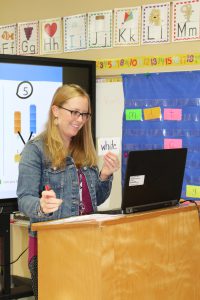 “The biggest benefit of the all-remote learning model at Johnstown is that it allows for frequent teacher interactions for our remote learners,” said Dr. Crankshaw. “It’s been a highly effective system that allows us to continue prioritizing our students and stay laser focused on critical learning standards for our students. We should all be proud of our faculty and staff – and especially our digital leader teachers, who are succeeding at a rather challenging task,” he added.
“The biggest benefit of the all-remote learning model at Johnstown is that it allows for frequent teacher interactions for our remote learners,” said Dr. Crankshaw. “It’s been a highly effective system that allows us to continue prioritizing our students and stay laser focused on critical learning standards for our students. We should all be proud of our faculty and staff – and especially our digital leader teachers, who are succeeding at a rather challenging task,” he added.
The all-remote team of teachers at Pleasant Avenue meet several times each week to discuss best practices and bounce ideas off of each other. Just over two months into the all-remote model, they have worked out the kinks, come up with solutions for obstacles they have faced and have valuable information to share with their colleagues on best practices for remote teaching/learning.
For kindergarten, Katie Warner is working with 16 first-year learners, many of whom have never seen the inside of a traditional classroom and have nothing to compare their virtual learning experience to. “Even in a regular classroom setting, it’s really tricky to keep kindergartners focused and engaged throughout the day, and remote learning has made it even more challenging ” Warner said. “Everything needs to be visual and interactive for them, so I’ve incorporated more dancing and singing, and even added special “get up and move” cards to our lessons. I’ve spent a lot of time recreating lesson plans to make them more interactive from the Promethean Board, which has become the one piece of technology that I rely on most,” she added.
Warner also noted the important role that her students’ families play. “Parents, guardians and family members play a crucial role in helping kindergartners to succeed in remote learning,” she said. “A four, five or six year old definitely needs someone in their household to commit to the process with them – help them to keep a schedule, log in when they’re supposed to and complete the work that is required. This is a total team effort. I basically think of my students’ families as ‘co-teachers,’” she added.
In first grade, Catherine Knabe-Bikowicz prioritizes academics, but has also put an emphasis on classroom connectedness for her 17 students. When you walk into her classroom, she has a “classroom family tree,” with photos of each child and their family members and pets, who classmates may occasionally see in the background during their virtual classes.
She has set up the classroom as though the kids are still there in person, with a placeholder photo of each child in their ‘assigned seat.’ She’ll occasionally change the seating arrangement, which the kids love. “They’re always asking me who they’re ‘sitting next to’ today,” Bikowicz said. Right now, their tables in the classroom are set up with a Thanksgiving plate for each child. “The seating arrangement helps me organize take home materials for each child, but it also helps the kids regain some of that connectedness they’re not getting from being here in-person,” she said.
In second grade, Ellen Roehl has 28 kids and admits that there are challenges that have come up that she wasn’t anticipating. “Who would have thought that lighting would be an issue – it’s just not something I would have thought of,” Roehl said. Indeed, she had to borrow a lighting ring from her daughter so that whatever she projects from the classroom can be seen clearly by her students at home. “I also have to watch out for the afternoon glare that comes in through the window.”
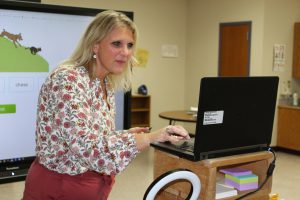 Roehl stressed how important it is that students’ at-home learning stations be quiet and free from distractions. “Most kids struggle with attention span to begin with, but when you add in the distractions from everything happening around them at home, it can sometimes disrupt the flow of the lesson,” she said. She also said timeliness and consistent attendance are very important to being successful with remote learning. “It really pays to be prepared before the start of a class, be on time – or even early – each day and to stay for the entire lesson,” she said.
Roehl stressed how important it is that students’ at-home learning stations be quiet and free from distractions. “Most kids struggle with attention span to begin with, but when you add in the distractions from everything happening around them at home, it can sometimes disrupt the flow of the lesson,” she said. She also said timeliness and consistent attendance are very important to being successful with remote learning. “It really pays to be prepared before the start of a class, be on time – or even early – each day and to stay for the entire lesson,” she said.
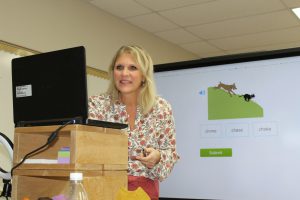 Cotter said she is very proud of the all-remote teaching systems they have in place at Pleasant Avenue and of the way her teachers have stepped up to the plate. “If the whole district ends up having to go remote, I know we will rely heavily on their expertise to guide us,” she said.
Cotter said she is very proud of the all-remote teaching systems they have in place at Pleasant Avenue and of the way her teachers have stepped up to the plate. “If the whole district ends up having to go remote, I know we will rely heavily on their expertise to guide us,” she said.

